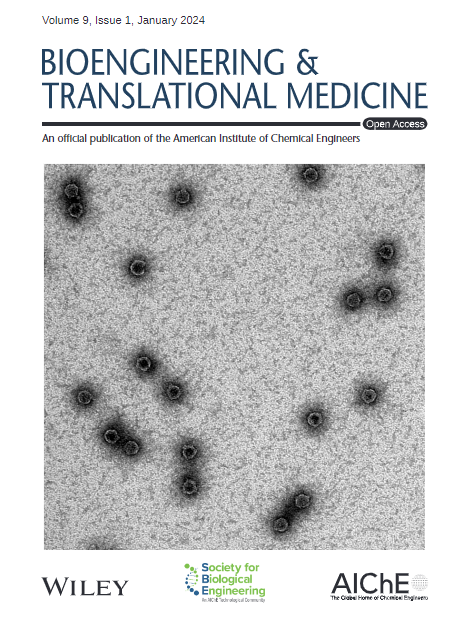Generation and ex vivo characterization of a full‐thickness substitute of the human urethra by tissue engineering
IF 5.7
2区 医学
Q1 ENGINEERING, BIOMEDICAL
引用次数: 0
Abstract
Tissue engineering may offer efficient alternatives for the surgical repair of severe conditions affecting the human urethra. However, development of tubular full‐thickness substitutes is challenging. In this work, we have generated and evaluated ex vivo a novel full‐thickness human urethra substitute (FHUS) containing its three main layers: the urethral mucosa (UM), the spongy layer (SP), and the tunica albuginea (AL). Results first showed that the generation of a FHUS significantly improved the biomechanical properties of this artificial tissue as compared to the individual layers, although the resistance of the native urethra was not reached. At the structural level, we found that FHUS shared important histological similarities with the native urethra. Analysis of the individual layers showed that UM had a stratified epithelium that expressed several epithelial markers, including cytokeratins CK7 and CK14, uroplakin 1b, and the intercellular junction proteins desmoplakin, tight junction protein 1, and claudin. At the stromal level, UM tended to increase the presence of collagen fibers and versican with time. The SP layer displayed abundant CD31 and CD34‐positive blood vessels, but small amounts of collagen and proteoglycans. The AL layer showed scattered smooth muscle cells expressing α‐smooth muscle actin, smoothelin, and desmin cell markers, and contained low amounts of collagen and proteoglycans. Analysis of the basement membrane components collagen IV and laminin revealed their progressive development with time, especially collagen IV. These results confirm the possibility of developing a partially biomimetic full‐thickness substitute of human urethra that might have potential clinical usefulness for the clinical repair of severe urethral lesions.组织工程制备全层人类尿道替代物及体外特性研究
组织工程可以为影响人类尿道的严重疾病的外科修复提供有效的替代方法。然而,管状全厚度替代品的开发具有挑战性。在这项工作中,我们在体外生成并评估了一种新型的全厚度人类尿道替代物(FHUS),它包含三个主要层:尿道粘膜(UM)、海绵层(SP)和白膜(AL)。结果首先表明,与单个层相比,FHUS的产生显著改善了该人工组织的生物力学性能,尽管没有达到天然尿道的阻力。在结构水平上,我们发现FHUS与天然尿道具有重要的组织学相似性。对单个层的分析表明,UM具有层状上皮,表达多种上皮标志物,包括细胞角蛋白CK7和CK14、uroplakin 1b、细胞间连接蛋白desmoplakin、紧密连接蛋白1和claudin。在间质水平,随着时间的推移,UM倾向于增加胶原纤维和花蜜质的存在。SP层显示丰富的CD31和CD34阳性血管,但胶原蛋白和蛋白多糖含量较少。AL层显示分散的平滑肌细胞表达α‐平滑肌肌动蛋白、平滑蛋白和desmin细胞标记物,并且含有少量的胶原蛋白和蛋白聚糖。对基底膜成分IV型胶原和层粘连蛋白的分析揭示了它们随着时间的推移而逐渐发育,尤其是IV型胶原。这些结果证实了开发部分仿生全层人类尿道替代品的可能性,这可能对严重尿道病变的临床修复具有潜在的临床应用价值。
本文章由计算机程序翻译,如有差异,请以英文原文为准。
求助全文
约1分钟内获得全文
求助全文
来源期刊

Bioengineering & Translational Medicine
Pharmacology, Toxicology and Pharmaceutics-Pharmaceutical Science
CiteScore
8.40
自引率
4.10%
发文量
150
审稿时长
12 weeks
期刊介绍:
Bioengineering & Translational Medicine, an official, peer-reviewed online open-access journal of the American Institute of Chemical Engineers (AIChE) and the Society for Biological Engineering (SBE), focuses on how chemical and biological engineering approaches drive innovative technologies and solutions that impact clinical practice and commercial healthcare products.
 求助内容:
求助内容: 应助结果提醒方式:
应助结果提醒方式:


